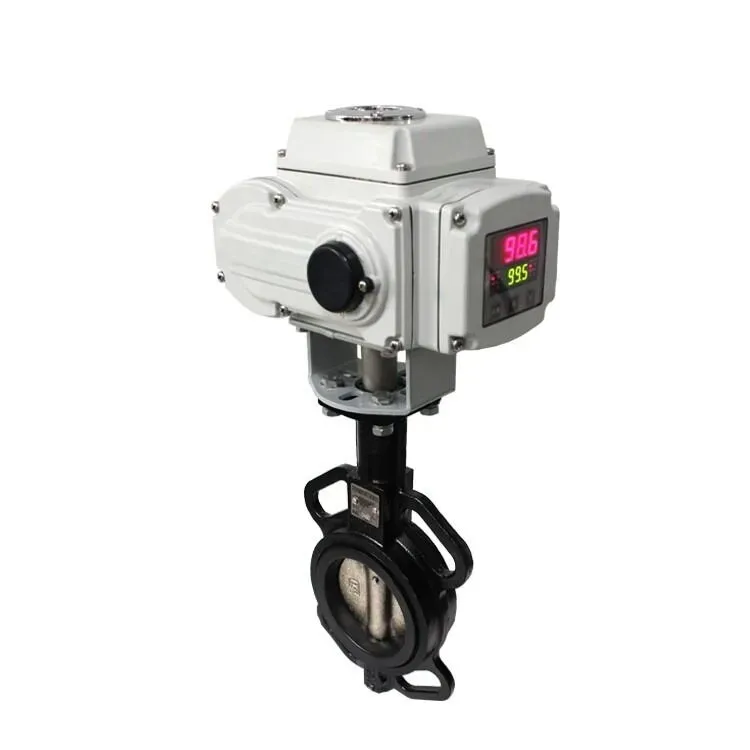Motorized butterfly valves, also known as electric butterfly valves, are transforming industries with their ability to deliver precise, reliable, and efficient fluid control. Combining the traditional butterfly valve design with advanced electric actuators, these valves provide unparalleled accuracy and ease of operation. Industries ranging from water treatment to chemical processing and HVAC systems rely on motorized butterfly valves for their adaptability, low maintenance, and energy-efficient performance.
This article delves into the features, benefits, working principles, and applications of motorized butterfly control valves, showcasing why they are becoming a preferred choice for industrial and commercial operations worldwide.
A motorized butterfly valve is a quarter-turn valve controlled by an electric actuator. The valve disc, positioned in the center of the pipe, rotates on a stem to open, close, or regulate fluid flow. The actuator, powered by electricity, converts electrical energy into mechanical torque to move the valve disc precisely.
These valves are widely used for their simplicity, reliability, and ability to integrate with modern automation systems. They are ideal for processes requiring accurate flow control and frequent operation, making them indispensable in industries like water treatment, oil and gas, and food production.

One of the standout features of motorized butterfly valves is their ability to provide precise control over fluid flow rates. The electric actuator ensures that the valve disc can be positioned with high accuracy, allowing for:
Consistent flow rates.
Enhanced process stability.
Optimization of product quality.
Precise control is especially beneficial in industries where even slight variations in flow can impact production quality or safety.
Motorized butterfly valves are designed for durability and minimal upkeep. Key factors contributing to their low maintenance include:
Remote Operation: The valves can be operated remotely, reducing the need for on-site personnel.
Diagnostic Capabilities: Electric components can be monitored and diagnosed remotely, allowing for quick identification of issues.
Robust Construction: The valves are built to withstand harsh conditions, minimizing wear and tear.
By reducing the need for manual intervention and frequent servicing, these valves help cut operational costs and increase productivity.
Motorized butterfly valves are highly energy-efficient compared to other valve types. The lightweight design of the valve disc and the minimal force required to operate it contribute to:
Lower energy consumption by the actuator.
Reduced overall operational costs.
For businesses aiming to align with sustainability goals, these valves offer an eco-friendly solution that minimizes energy use without compromising performance.
Motorized butterfly valves are compatible with a wide range of pipe sizes and materials, making them suitable for various applications. Their adaptability is further enhanced by:
Universal Installation: Easy integration into existing systems.
Wide Application Range: Suitable for handling different fluids, including water, gas, and chemicals.
Their versatility makes them a cost-effective solution for diverse industrial requirements.
The operation of motorized butterfly valves is straightforward yet highly effective, relying on the coordination between the electric actuator and the valve disc.
The electric actuator receives signals to open, close, or regulate the valve.
At 0 degrees, the valve disc is fully closed, blocking fluid flow.
At 90 degrees, the valve disc is fully open, allowing unrestricted flow.
Intermediate positions regulate the flow rate precisely.
Sensors in the actuator provide real-time data on the disc’s position, enabling precise adjustments and monitoring.
This quarter-turn mechanism allows for rapid operation, making the valves ideal for applications requiring quick responses or frequent adjustments.
Modern motorized butterfly valves come equipped with sophisticated feedback and monitoring systems, enhancing their functionality and reliability.
Sensors installed on the valve detect and report the real-time position of the valve disc. This data is relayed to control systems, enabling:
Accurate monitoring.
Seamless integration with automation systems.
Enhanced process control.
Flow meters integrated into the valve provide continuous data on fluid flow rates. This feature allows operators to:
Adjust flow settings based on real-time conditions.
Prevent overflows or blockages.
Optimize system efficiency.
These advanced features make motorized butterfly valves a critical component in modern industrial automation systems.
Motorized butterfly valves are versatile and find applications in various industries due to their unique combination of features.
Used for regulating water flow in filtration, purification, and distribution systems.
Remote operation reduces manual labor in large facilities.
Ideal for handling corrosive and high-temperature fluids.
Precise flow control ensures safety and product quality.
Regulate airflow in heating, ventilation, and air conditioning systems.
Enhance energy efficiency by controlling flow rates accurately.
Ensure precise control of liquids in production lines.
Meet stringent hygiene and safety standards with high-quality materials.
Handle high-pressure and high-temperature conditions.
Provide reliable performance in critical operations.
Motorized butterfly valves offer several advantages that make them a valuable investment for industries:
Remote operation and quick response times improve overall efficiency.
Energy-efficient operation and low maintenance reduce long-term costs.
Durable construction ensures consistent performance even in harsh conditions.
Seamless compatibility with modern control systems.
Proper installation and regular maintenance are essential to maximize the lifespan and performance of motorized butterfly valves.
Select a valve suitable for your specific application and fluid type.
Align the valve disc with the pipeline to avoid uneven wear.
Adhere to installation instructions for optimal performance.
Check for signs of wear, leaks, or corrosion.
Ensure smooth operation by lubricating moving parts as needed.
For smart valves, keep software up-to-date to maintain compatibility and functionality.
Motorized butterfly control valves represent a significant advancement in fluid control technology. With their precision, energy efficiency, low maintenance, and adaptability, they address the needs of modern industries striving for efficiency and sustainability.
From water treatment to chemical processing and HVAC systems, these valves deliver reliable performance and cost savings, making them an indispensable component in industrial operations. As automation and energy efficiency become increasingly important, motorized butterfly valves are well-positioned to meet the challenges of tomorrow's industries.
By choosing motorized butterfly valves, businesses can ensure optimized processes, reduced operational costs, and a future-ready approach to fluid control.
